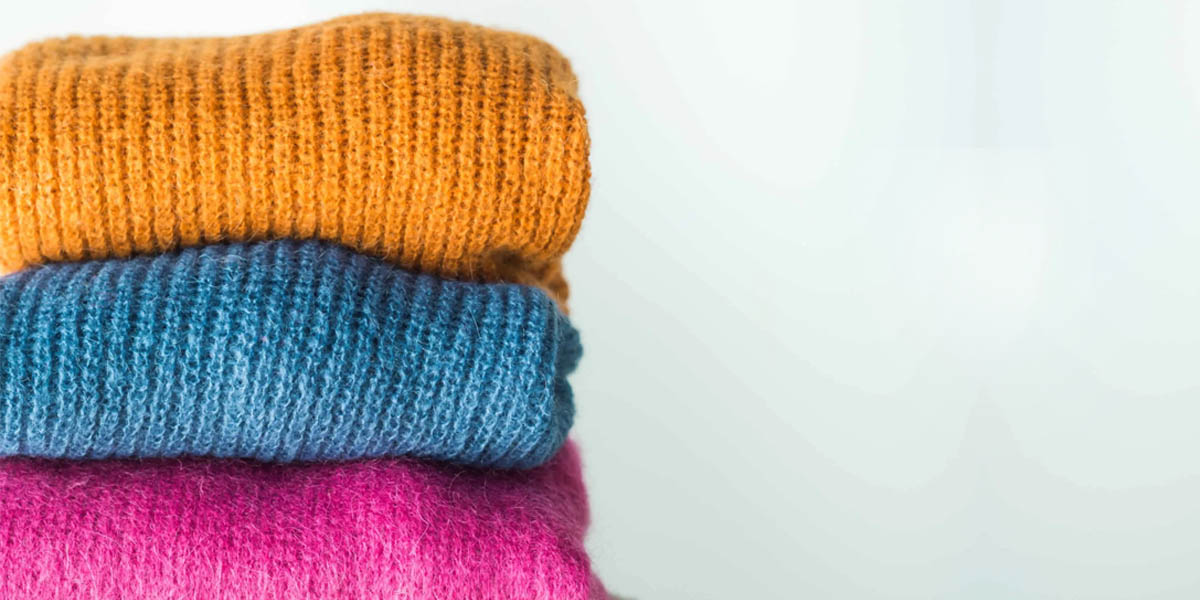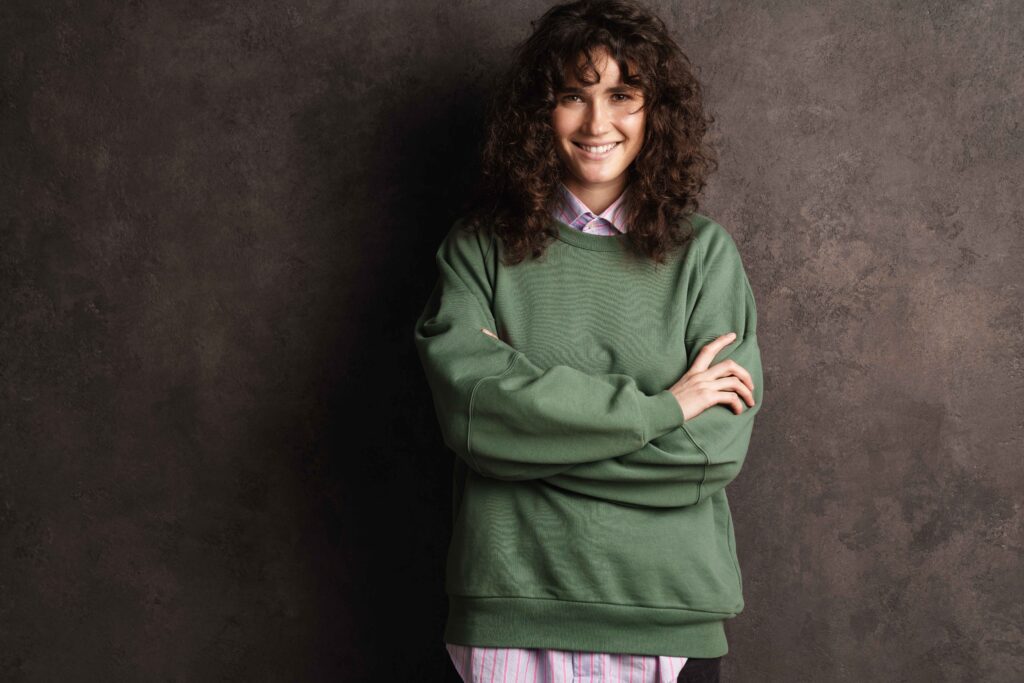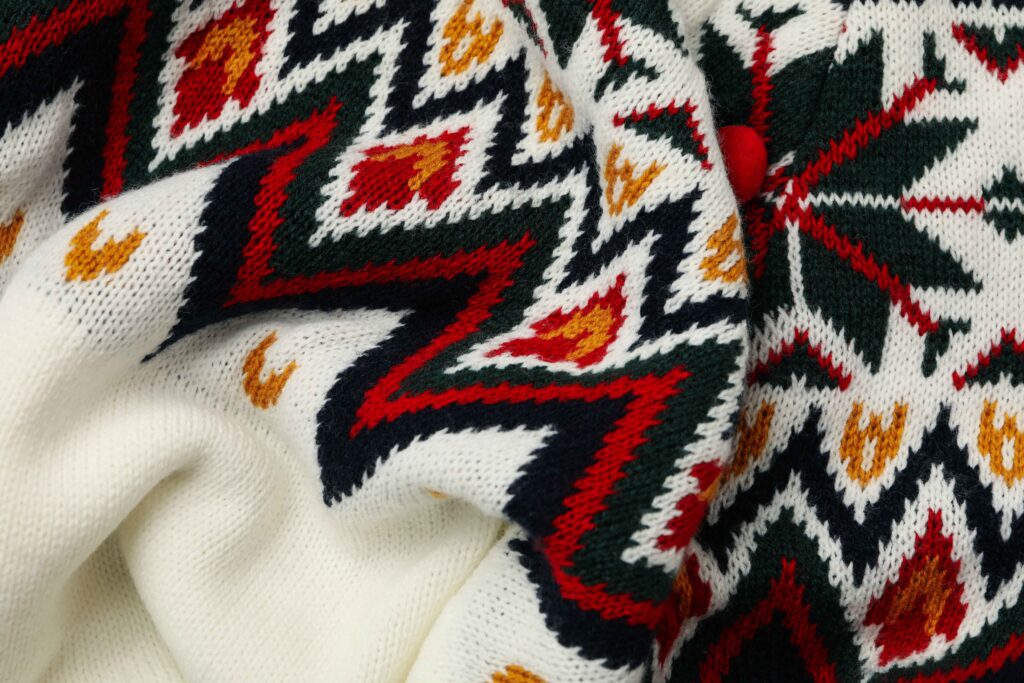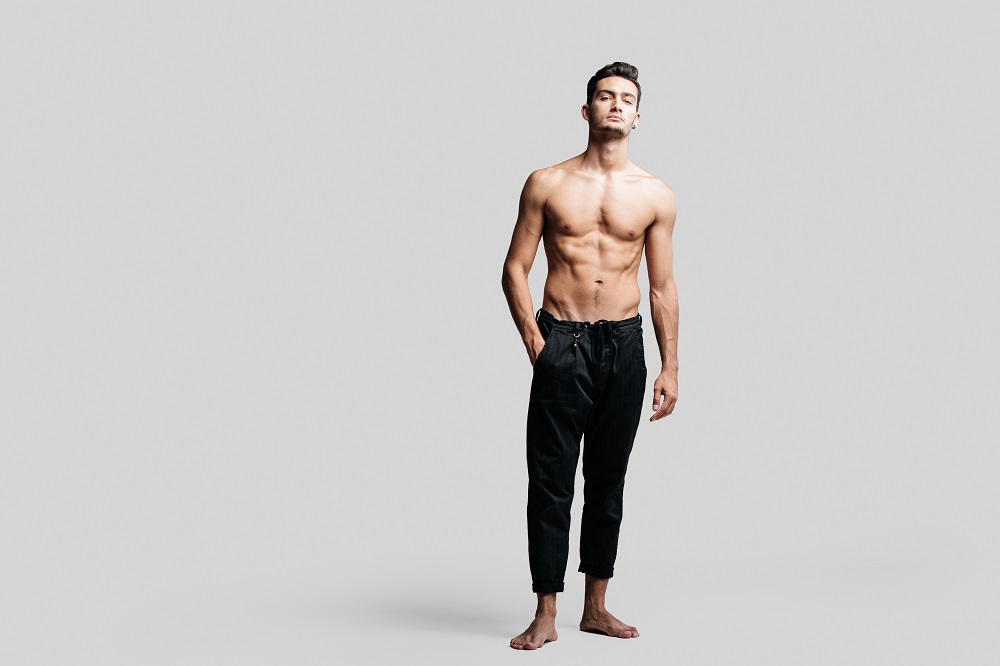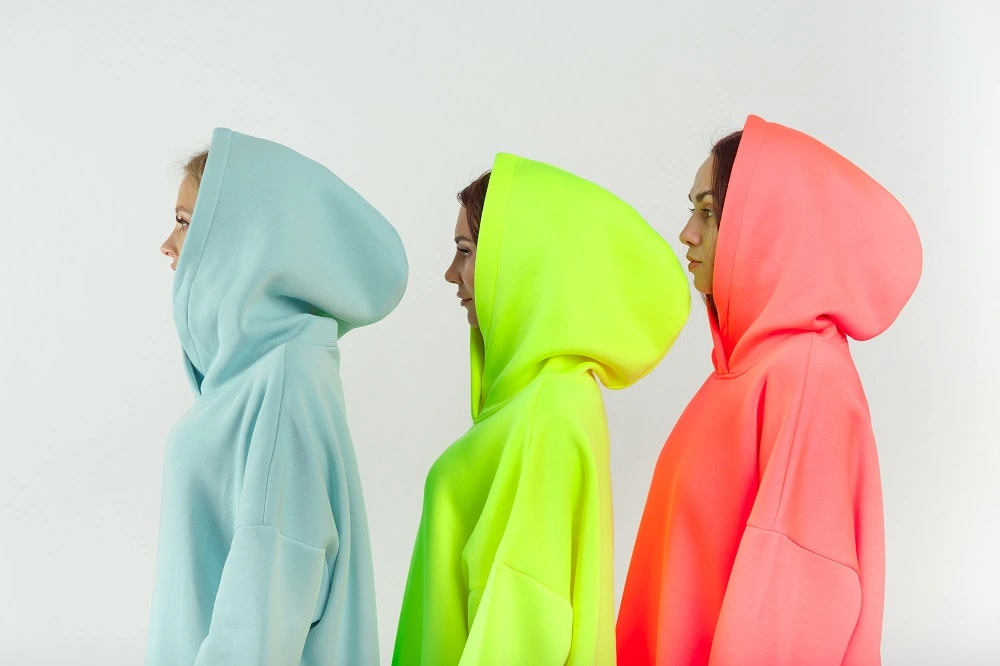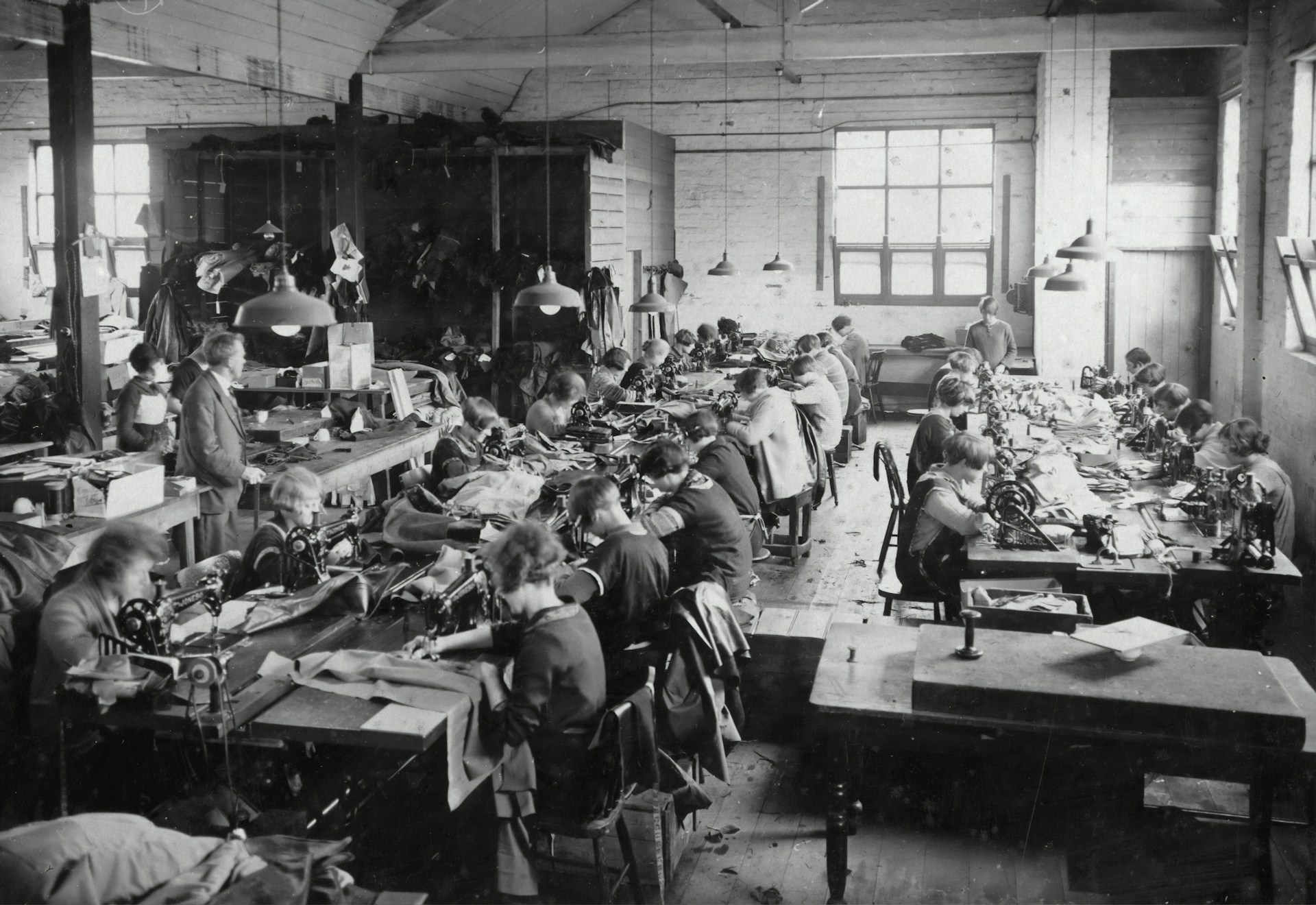Finding the ideal ensemble for comfortable wear all day is not always simple. You may feel too hot or too chilly due to a combination of factors, including air conditioning in offices and seasonal changes in body temperature. A sweater vs. sweatshirt can help with that. However, if you’re looking to buy your next stylish and useful layering piece, you may be curious about what the difference is between a sweater and a sweatshirt.
Are sweaters and sweatshirts the same? Sweatshirts vs. sweaters have several features in common, but they are not the same in terms of manufacturing or intended function. This guide will help you with the difference between a sweater and a sweatshirt for year-round comfort and style.
What is a Sweater?
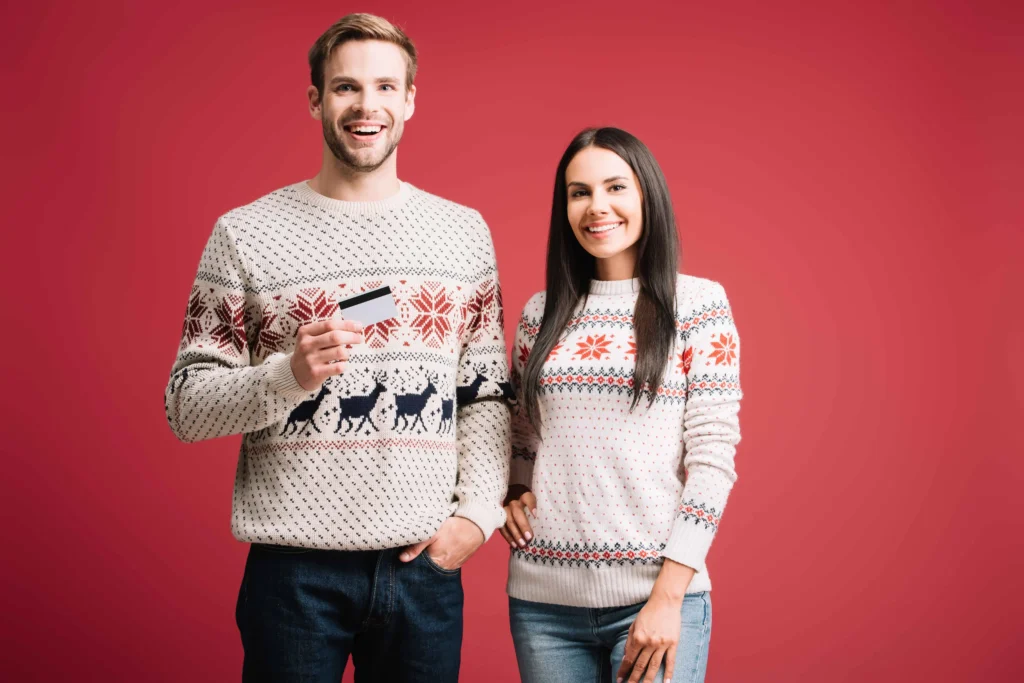
A definition of sweater is a knitted item of clothing, usually composed of cotton, wool, or synthetic materials. Pullovers, turtlenecks, and cardigans are just a few of the many varieties of sweaters that are popular for their warmth and coziness. You can make sense of your perplexity regarding the best option between a sweatshirt and a sweater by reading the following features.
Sweater Types
There are many different styles of sweaters, and each has special qualities and applications. Selecting the appropriate sweater for any occasion can be made easier by being aware of these various kinds.
Oversized Sweater
Sweaters with pullovers are timeless and functional. They are simple to wear and have many styling options.
Cardigan
Cardigan Sweaters with a front opening are called cardigans, and they usually have buttons or zippers.
Turtleneck Sweater
The collar of a turtleneck sweater is close-fitting, high, and covers the neck. Many additionally look at possibilities for crewnecks versus t-shirts.
V-neck Sweater
The neckline of V-neck sweaters has a “V” shape to it.
Crewneck Sweater
The round neckline of crewneck sweaters rests at the base of the neck.
Pull-over Sweater
The textured patterns of cable knit sweaters, which resemble twisted cables, are their defining feature.
What is a Sweatshirt?
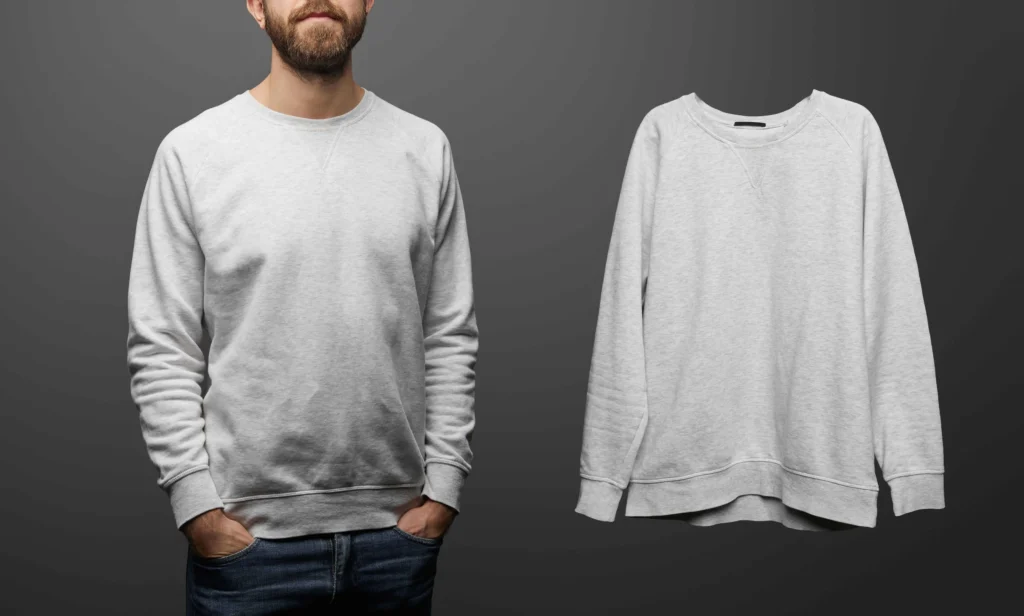
A sweatshirt, defined as a comfortable clothing item, is usually made of blends of cotton and polyester and is often lined with fleece for added warmth. Sweatshirts are typically made of stitches rather than knits, giving them a smooth exterior and a cozy, soft interior. Casual comfort is the main priority when designing sweatshirts made of fleece or cotton. Sweatshirts are the height of casual style because of their relaxed shape and emphasis on functionality.
Sweatshirt Types
Additionally, many styles of sweatshirts are appropriate for different events and purposes. To dispel the misconception between a sweater and a sweatshirt, a sweatshirt is a loose-fitting top that is typically made of cotton or a blend of cotton and is intended to be warm and comfortable.
Traditional Pullover Sweatshirt
The traditional pullover sweatshirt is easy to wear, cozy, and functional.
Pull-On Sweatshirt
Sweatshirts with a front zipper provide ease by making it simple to put them on and take them off.
Crewneck Sweatshirt
Sweatshirts with crewnecks have a round neckline and no other features, such as zippers or hoods.
Large-sized Sweatshirt
Whether worn for comfort or as part of a streetwear look, oversized sweatshirts provide a loose, comfortable fit. If you’re wondering, is hoodie a type of sweatshirt? A sweatshirt is a loose top that’s typically made of cotton or a combination of cotton and is meant to be warm and comfortable.
Vibrant Sweatshirt
Your personality and sense of style can be expressed with graphic sweatshirts, which come with printed graphics, logos, or phrases.
What’s the Difference Between a Sweater and a Sweatshirt?
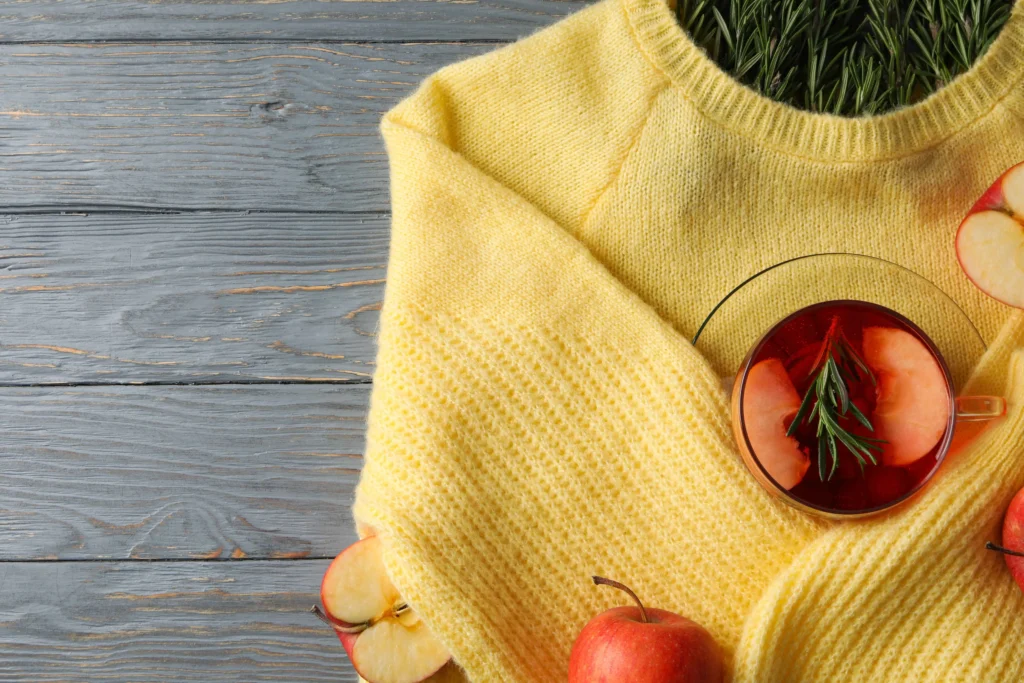
These two outfits may seem similar in name and look, yet they differ in some unexpected ways.
Sweater vs. Sweatshirt: Construction and Materials
When it comes to construction and materials, sweaters against sweatshirts have distinct differences that set them apart. Sweaters are typically knitted garments, often made from natural fibers like wool, cotton, or cashmere. The knitting process creates a textured-best fabric for sweaters with intricate patterns and designs, giving sweaters their characteristic look and feel.
On the other hand, sweatshirts compared to sweaters are usually made from a thick, fleece-like fabric—the best fabric for sweatshirts that are created through a process called looping. This technique involves weaving cotton or synthetic fibers into a soft, fuzzy material on the inside while maintaining a smooth exterior. Sweatshirts often incorporate a blend of cotton and polyester to enhance durability and moisture-wicking properties.
The construction methods for these garments also differ. Sweaters are often crafted using various knitting techniques, while sweatshirts are sewn together from cut pieces of fabric, resulting in their looser, more relaxed fit.
Styles and Uses for Sweaters vs. Sweatshirts
Formal vs. Casual Appeal
Sweaters typically offer a more formal and elegant appeal, making them suitable for both casual and dressier occasions. You can easily pair a sweater with tailored pants or a pleated skirt for a sophisticated look. Sweatshirts, on the other hand, exude a relaxed and casual vibe, perfect for laid-back outings or athletic activities.
Versatility in Styling
Both garments offer excellent fashion versatility. Sweaters excel in layering over formal attire, while sweatshirts pair effortlessly with various bottoms, from high-waisted jeans to colorful leggings. For a trendy twist, try an oversized sweater or a cropped sweatshirt to stay on top of current fashion trends.
Climate Considerations
When choosing between a sweater and a sweatshirt, consider the climate. Sweaters provide superior insulation, making them ideal for cooler months. Sweatshirts offer versatility for transitional weather, striking a balance between warmth and breathability.
Formality and Occasion for Sweaters vs. Sweatshirts
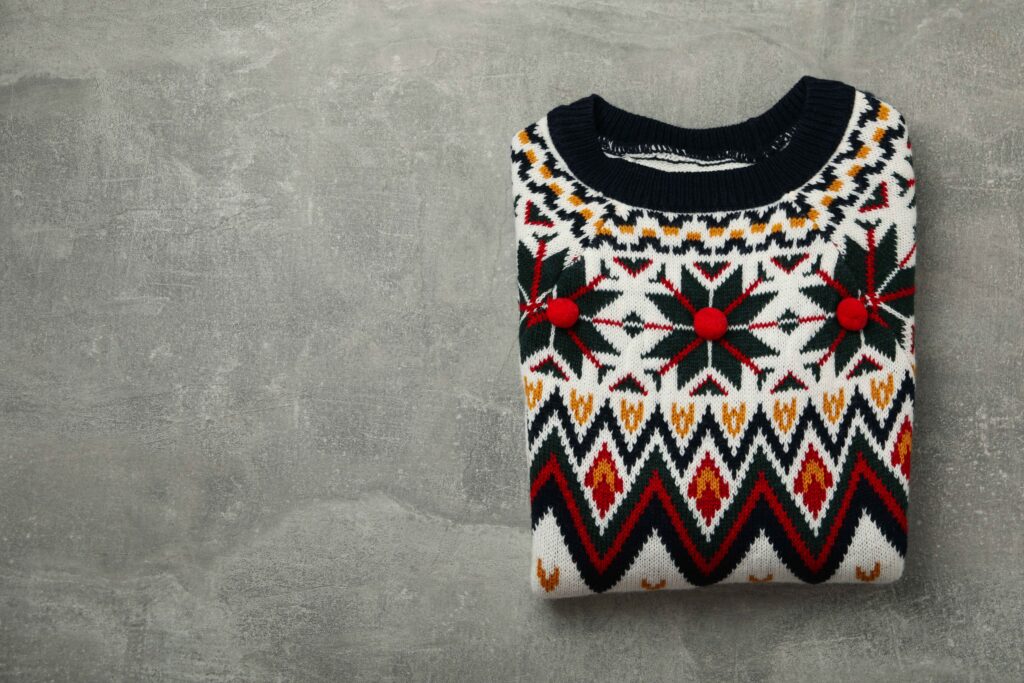
The level of formality is a key distinguishing factor. Sweaters are generally considered more formal and suitable for office wear or upscale events. Sweatshirts, on the other hand, are essentially casual, perfect for lounging or athletic activities. This distinction influences their styling options and appropriate contexts for wear.
To assist you in choosing what to wear and when for formal occasions, consider the following examples:
Sweaters:
- In an official situation, a sweater may seem put together and polished while being comfortable, making it an excellent option for a professional atmosphere. Select a well-made sweater, like wool or cashmere, and wear it with fitted slacks or a midi skirt.
- When going on a date, wearing a sweater might be a warm and charming choice. For an effortlessly put-together look, choose a sweater that fits well and has a distinctive design. Wear it with jeans or a skirt.
- For a special occasion such as a wedding or holiday party, for example, a fancy sweater can be a perfect fit. For a chic look, seek a sweater with distinctive embellishments like beading or sequins and wear it with a skirt or dress pants.
Sweatshirt:
- Sweatshirts are a common choice for sports activities since they are cozy, breathable, and provide a complete range of motion. It looks well with sports pants for a comfy and practical look.
- Sweatshirts are a terrific option for a laid-back day out because they are easy to wear and comfortable. For a carefree and laid-back style, go for a sweatshirt with an interesting print or design and match it with jeans or leggings.
- Sweatshirts are the ideal choice for comfortable relaxing at home. For a laid-back look, wear it with leggings or sweatpants.
Design and Fit for Sweaters vs. Sweatshirts
Sweaters often boast a more tailored silhouette with various neckline styles, such as crew neck or V-neck. Sweatshirts typically have a looser fit and may include features like hoods or front pockets, catering to a more relaxed aesthetic. Sweatshirts have fewer design options than sweaters, which are more limited in their shapes, designs, and materials.
- Sweatshirts are smoother and more uniformly textured than sweaters, which tend to be more textured.
- Sweatshirts may fasten with a zipper or a hood. Frequently, they have a front pocket.
- While sweaters can have a variety of necklines, such as turtlenecks, V-necks, or even off-the-shoulder necklines, sweatshirts almost always have a crew neck design.
- Sweatshirts can be designed with logos, images, or other patterns, or they can be plain.
Customization
The latter evolved into a means of self-expression for wearers as well as designers, which is one of the main distinctions between them and sweaters. Your choice of clothing may convey a lot about your style and personality, whether it’s a strong graphic or a hilarious quote. You can design a sweatshirt that is exclusively yours by utilizing the personalization feature. Although sweaters can also be tailored to order, their more traditional and timeless style makes them less suitable for eye-catching phrases or vibrant graphics. Sweaters, on the other hand, frequently have subtler design components like textured knits or distinctive stitching patterns.
How to Care for Your Sweaters and Sweatshirts
Washing and Drying
Proper care starts with washing. For sweaters, hand-wash in cool water with gentle detergent, squeezing out excess water rather than wringing. Sweatshirts can typically be machine-washed. Always use cold water and a delicate cycle to preserve the fabric. Avoid hanging wet garments, as this can stretch them out of shape. Instead, lay them flat on a drying rack to maintain their structure.
Storage and Maintenance
Fold your sweaters and sweatshirts instead of hanging them to prevent shoulder damage. Store in cool, dark, and well-ventilated areas. Regularly brush garments with a soft-bristled toothbrush to remove debris and maintain appearance. For pilling, use a razor or battery-operated pill remover carefully. Before seasonal storage, ensure items are clean and consider using lavender sachets to deter moths.
What’s More Comfortable to Wear a Sweater or Sweatshirt?
When it comes to comfort, sweatshirts often have the edge over sweaters. Sweatshirts are designed with casual comfort in mind, featuring a looser, more relaxed fit that allows for greater freedom of movement. Their fleece or cotton construction prioritizes breathability while still providing warmth.
Material Matters
Sweaters, typically made from wool or cotton, offer a snug, tailored fit. While this can look more elegant, it may feel restrictive to some. Sweatshirts, on the other hand, are often crafted from heavier, more durable fabrics like heavy cotton or fleece, providing a cozy feel that many find more comfortable for everyday wear.
Comfort
Sweatshirts can be more comfortable to wear than other types of sweaters since they are composed of cuddly, soft materials like fleece or French terry cotton. Additionally, they usually fit looser and more comfortably, which might make them perfect for doing errands or just hanging around the house.
Both produce warmth, but they work differently. Sweaters efficiently retain heat thanks to their tighter weaves. Sweatshirts are appropriate for a range of climates because of their looser structure, which provides a more breathable warmth.
Ultimately, the choice between a sweater and a sweatshirt depends on personal preference and the occasion. For lounging at home or casual outings, a sweatshirt’s relaxed fit often wins in the comfort department.
Is a Sweatshirt Warmer Than a Sweater?
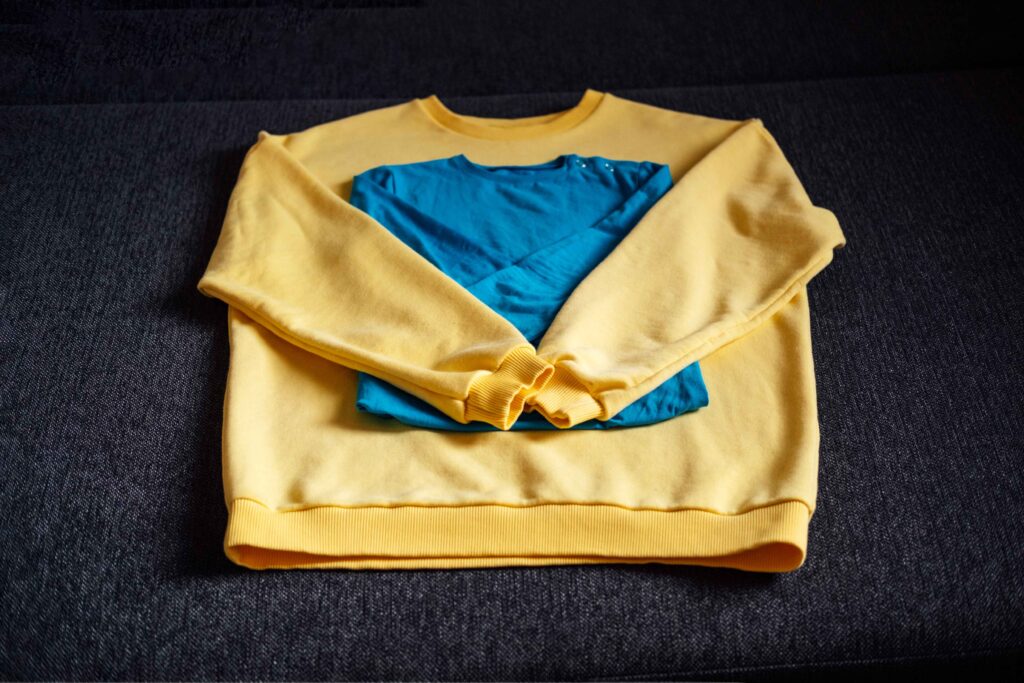
Though the methods are different, both offer warmth. Sweaters effectively trap heat due to their tighter weave. Because of their looser fit and increased breathability, sweatshirts are appropriate for a range of temperatures.
Sweaters
These are constructed from highly insulating materials, like wool, which effectively retain heat. Sweaters, especially those made of thicker wool, are therefore typically warmer sweaters in comparison to sweatshirts.
Sweatshirts
Typically, fleece or cotton—which are warm but not as insulating as wool—are used to make sweatshirts. They are perfect for layering and offer a moderate amount of warmth. In Atlanta, Georgia, unisex sweatshirts have recently gained popularity among consumers. Sweatshirts and sweaters are made of identical materials, but the hood is added. Sweaters are somewhat warmer than sweatshirts because the hood can add additional warmth to the head and neck.
Why Do People Call Sweatshirts Sweaters?
Sweatshirts are indeed excellent at keeping their users warm, but the word “sweat” derives from their days on the field, where they were primarily cotton practice jerseys. So what does one use a sweatshirt for these days? In addition to being worn for warmth in colder weather, supporting a college team, or layering to create a stylish ensemble, sweatshirts are still utilized for the original purpose of comfortable athletic apparel.
The confusion between sweatshirts and sweaters often stems from their similar appearance and function. Both garments are designed to keep you warm and comfortable, leading some to use the terms interchangeably. However, there are distinct differences in their construction and origin.
Historical Context
In the world of fashion, sweatshirts and sweaters have fascinatingly evolved. Sweaters were first worn in Europe in the fifteenth century by seafarers as a useful knit garment to keep them warm on their journeys. But the word “sweater” didn’t become well-known until the 1920s, when it went from being a practical article of clothing to a fashion mainstay. Simultaneously, collegiate players contributed to the popularization of the sweatshirt, which was first created as sportswear to provide extra warmth while working out. Crewneck sweatshirts gained popularity as a casual, comfortable garment and were included in daily wear.
A wider audience was made possible with the introduction of personalization and bulk sweatshirts and sweaters. Customization, such as inexpensive custom sweaters, allowed people to express their individuality and style through their clothes. These clothes’ cultural importance and design are still changing in the modern era. They are adaptable pieces that satisfy a range of tastes and situations by combining comfort and style.
Regional Variations
In some regions, like Australia, the terms “jumper” and “windcheater” may be used instead of “sweater” and “sweatshirt,” respectively. This regional variation in terminology can contribute to the confusion between these two garments.
Can I Layer a Sweatshirt Over a Shirt Like a Sweater?
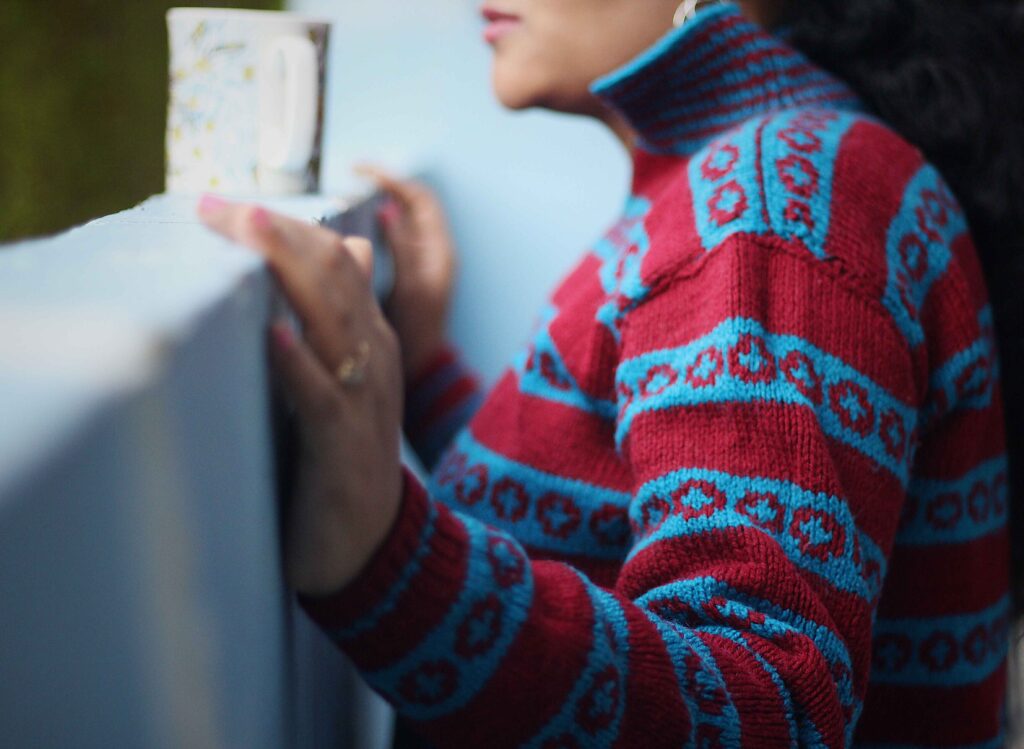
Yes, you can layer a sweatshirt over a shirt similarly to how you would layer a sweater. This versatile styling technique allows you to adapt to changing temperatures and add depth to your outfit. According to Merrick’s Art, layering shirts and sweaters is an easy way to stay warm and add dimension to your look as the weather cools down. Due to their extreme adaptability, sweatshirts are an essential piece of clothing for any eco-aware wardrobe.
- Adding warmth to a shirt by layering a sweater on top of it is a good idea throughout the winter.
- Athleisure: Sweatshirts are ideal for putting together a stylish, athletic-inspired outfit for people who like a sporty aesthetic. Including references or emblems from your favorite sports club or gym makes this work well.
- Casual events: For a relaxed, easygoing vibe, team a classic sweatshirt with jeans or leggings. You can use this for a cozy night in or a get-together with friends.
- Semi-formal occasions: A smart casual ensemble can be achieved by teaming a well-fitting, premium sweatshirt with chinos or a skirt. Your ensemble can look more professional if you wear the sweatshirt layered over a white shirt.
Considerations for Comfort
When layering a sweatshirt over a shirt, consider the fit and fabric of both garments. Choose a lightweight, fitted sweatshirt to avoid adding too much bulk. As noted by Ailbiona, the sweatshirt should be slightly oversized to accommodate the structure of the shirt underneath, preventing bunching and ensuring a comfortable fit.
Styling Tips
For a polished look, opt for a sweatshirt in a neutral color that complements your shirt. This layering technique works well for casual outings or as a practical solution for variable temperatures during travel.
Sweater vs. Sweatshirt: Which One Wins?
The outfit’s intended atmosphere and one’s own choice take center stage in the entertaining discussion between sweater and sweatshirt comparison. Sweaters are versatile enough to go with both dressier and more casual styles thanks to their variety of weaves and fabrics. Sweatshirts give a laid-back vibe to any outfit because they’re frequently connected to comfort and sportswear.
Are you planning how to start a clothing brand? Whether it’s the cozy feel of a sweatshirt or the timeless attractiveness of a sweater, each adds its special charm to the fashion scene. Weft Apparel is a good choice for a custom hoodie manufacturer. has a track record of producing fashionable, comfy, and attractive items of superior quality.

